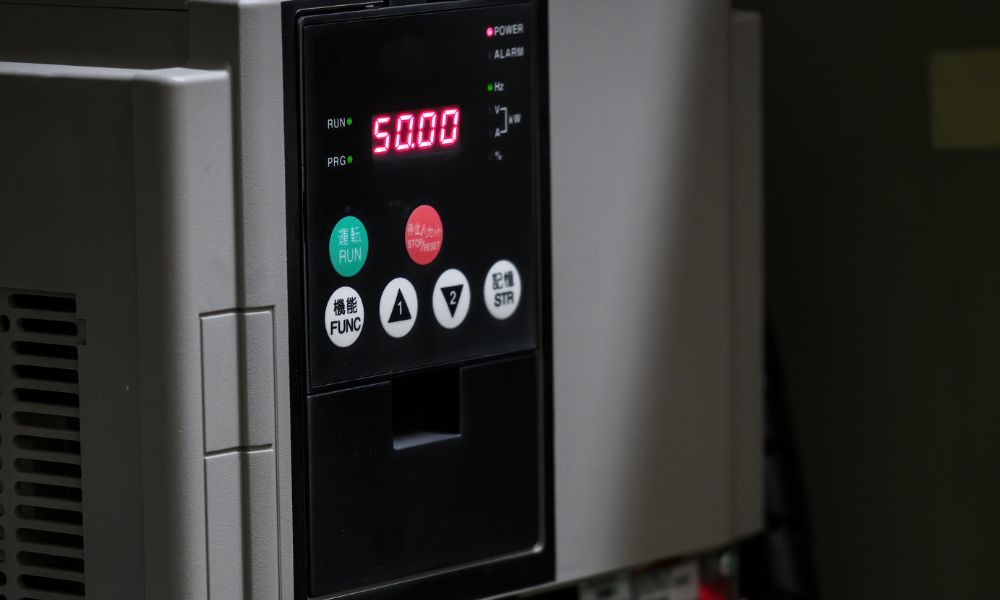
The speed of an electric motor needs to change according to the machine or project in which it is used. This may be necessary for several reasons, such as matching the speed of a production line or process, improving energy efficiency, or increasing or decreasing torque. One way to change the speed of an electric motor is to use a frequency converter.
Whether you are looking to purchase your first frequency converter or are simply curious about how it works, this article is for you. Let’s look at what a frequency converter is and what its uses are.
What Is a Frequency Converter?
A frequency converter is an electronic device that changes the speed of an electric motor by changing the frequency of the power supplied to the motor.
The most common frequency converter type is the AC drive, which changes the AC power supplied to the motor from a standard 60 Hz to a different frequency. This change in frequency alters the rotation speed of three-phase AC motors.
Frequency converters can change the speed of both single-phase and three-phase AC motors. However, these converters are most commonly used with three-phase motors because changing the frequency of power supplied to a single-phase motor can cause problems such as phase loss.
How Do Frequency Converters Work?
Frequency converters work by changing the shape of the AC waveform supplied to the motor. This change in waveform alters the speed of rotation of the motor’s shaft.
The most common frequency converter type is the AC drive, which uses thyristors to change the shape of the AC waveform. Thyristors are semiconductor devices that can be turned on or off rapidly. By turning the thyristors on and off at the right time, the AC drive can change the shape of the AC waveform supplied to the motor.
What Are the Uses of Frequency Converters?
Frequency converters work well in a wide variety of applications where the speed of an electric motor needs to be changed. One common use is in a tachometer to signal the speed at which an engine is rotating. When it comes to understanding signal conditioning, it is vital to properly understand the use of frequency converters so that you can change the speed at which an electric motor is rotating.
Some other common uses for frequency converters are:
- Matching the speed of a production line or process
- Improving energy efficiency
- Increasing or decreasing torque
- Controlling the speed of pumps, fans, and other types of motors
- Protecting motors from voltage spikes
- Providing soft start capability for motors
You’ll find frequency converters in various applications, from production lines and pumps to fans and motors.
Frequency converters are an essential part of many industrial and commercial applications. If you need to change the speed of an electric motor, a frequency converter is an ideal solution. The next time you see a frequency converter, you’ll know what it is and does.
